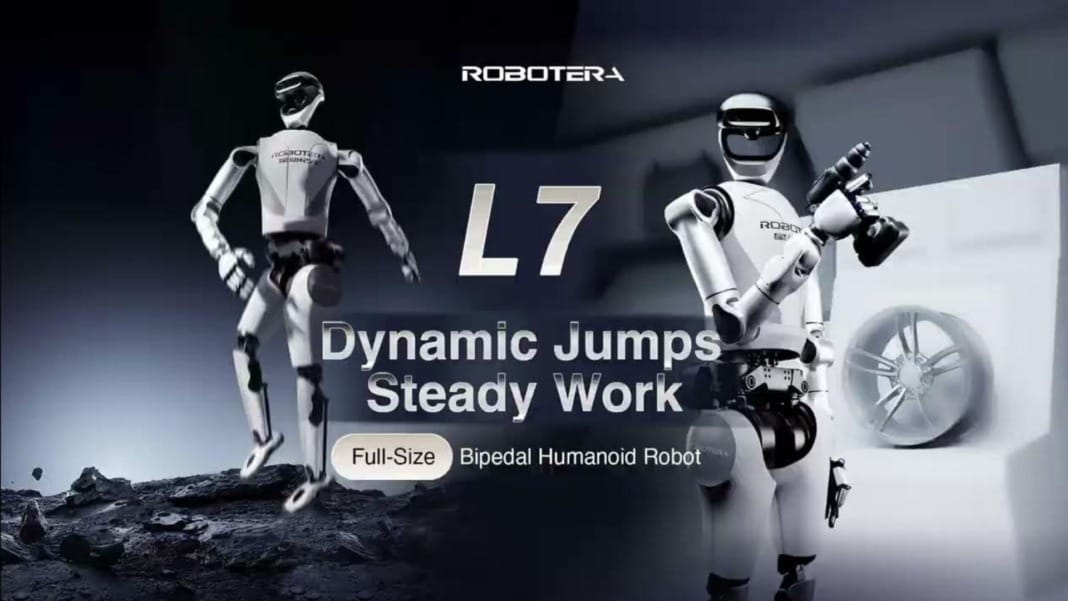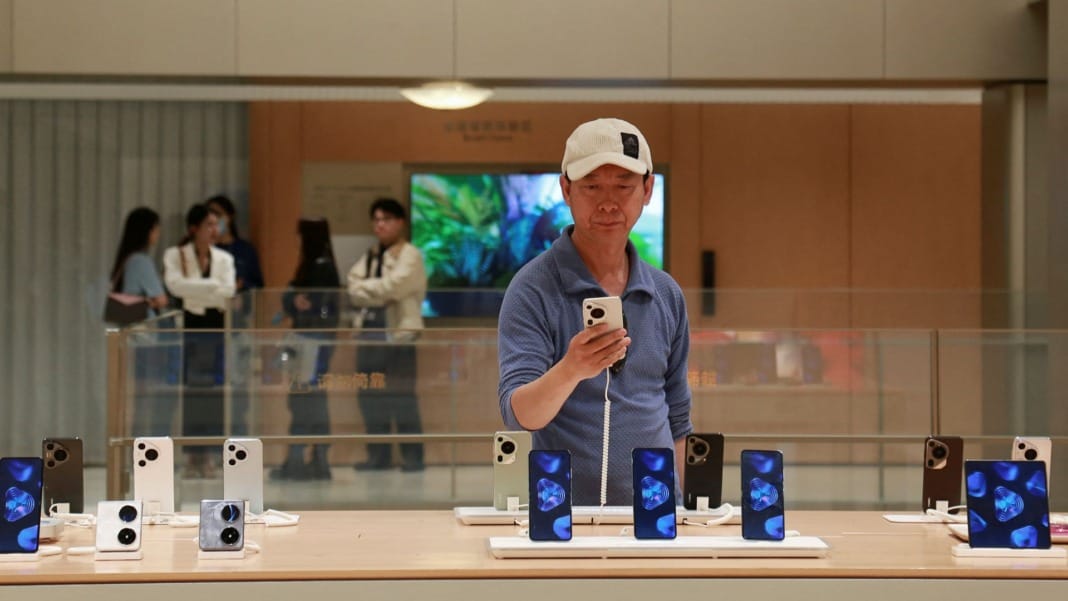Chinese robotics company Robotera has introduced its newest humanoid robot, the L7, marking a significant step forward in the global race to develop high-functioning, AI-powered robotic assistants. Standing at 171 cm and weighing 65 kg, the L7 combines advanced mobility, impressive performance features, and intelligent systems to serve both entertainment and practical purposes in industrial settings.
ROBOTERA Unveils L7: Next-Generation Full-Size Bipedal Humanoid Robot with Powerful Mobility and Dexterous Manipulation!#ROBOTERA #HumanoidRobot #Robot #EmbodiedIntelligence pic.twitter.com/3QI75tM8TK
— ROBOTERA (@roboterax) July 23, 2025
A blend of agility and intelligence
The Robot L7 boasts a lightweight yet durable frame composed of aerospace-grade aluminium alloy and carbon fibre composites. Its sophisticated build enables it to carry out a wide range of movements, including running, jumping, dancing, and adjusting its balance on the fly. The robot is equipped with fast-response joint motors, enabling it to change direction quickly while maintaining stability and avoiding falls.
A standout feature of the L7 is Robotera’s proprietary artificial intelligence platform, known as “Body and Brain”. This system provides full-body control, enabling the robot to perform movements that closely mimic human motion. The result is a robot that moves with remarkable fluidity and can effortlessly complete complex tasks.
One of L7’s most notable capabilities is its speed. The robot can sprint at up to 9 miles per hour (14.4 kilometres per hour), making it one of the fastest full-sized humanoid robots currently available. This level of agility not only allows for entertainment demonstrations but also positions the robot for practical applications that require quick mobility between locations.
A shift in robotics use cases
The launch of the L7 coincides with a surge in humanoid development within the global robotics industry. From established corporations to emerging startups, companies worldwide are investing heavily in robotics that combine mechanical excellence with artificial intelligence.
Robotera’s L7 is part of a broader trend in which humanoid robots are becoming more viable for roles once thought to be strictly human. These include factory and warehouse work, customer service positions, and even security-related tasks. Unlike traditional industrial robots, which automakers have used for decades, humanoid robots like the L7 are now being tested in real-world manufacturing environments, illustrating a growing confidence in their potential.
Past attempts to integrate humanoid robots into consumer-facing roles have had mixed success. SoftBank’s Pepper robot, once a popular choice for customer service in retail and transport hubs, struggled with limitations in both movement and cognition. Production of Pepper was discontinued in 2021. However, advancements in hardware and AI have since enabled newer models to surpass previous technical boundaries.
Future prospects and ongoing challenges
Despite the promising developments, widespread adoption of humanoid robots like the L7 remains a distant goal. While many robots have mastered lower-body mobility, upper-body functionality—particularly in tasks requiring fine motor skills with hands and fingers—continues to pose challenges. Most humanoid robots still lack the dexterity needed to handle intricate or delicate tasks with speed and accuracy.
Additionally, integrating humanoid robots into workplaces that involve close human interaction raises logistical and safety concerns. As robotics engineers push towards a future of mass production and deployment, questions remain about how easily these machines can be incorporated into existing commercial or industrial environments.
Nonetheless, the competition in the humanoid robotics space is intensifying. Established players and emerging innovators alike are racing to develop the first truly scalable and commercially viable humanoid robot. With growing investment and rapid technological advancements, the field is progressing rapidly, and breakthroughs could significantly reshape various sectors in the years ahead.





